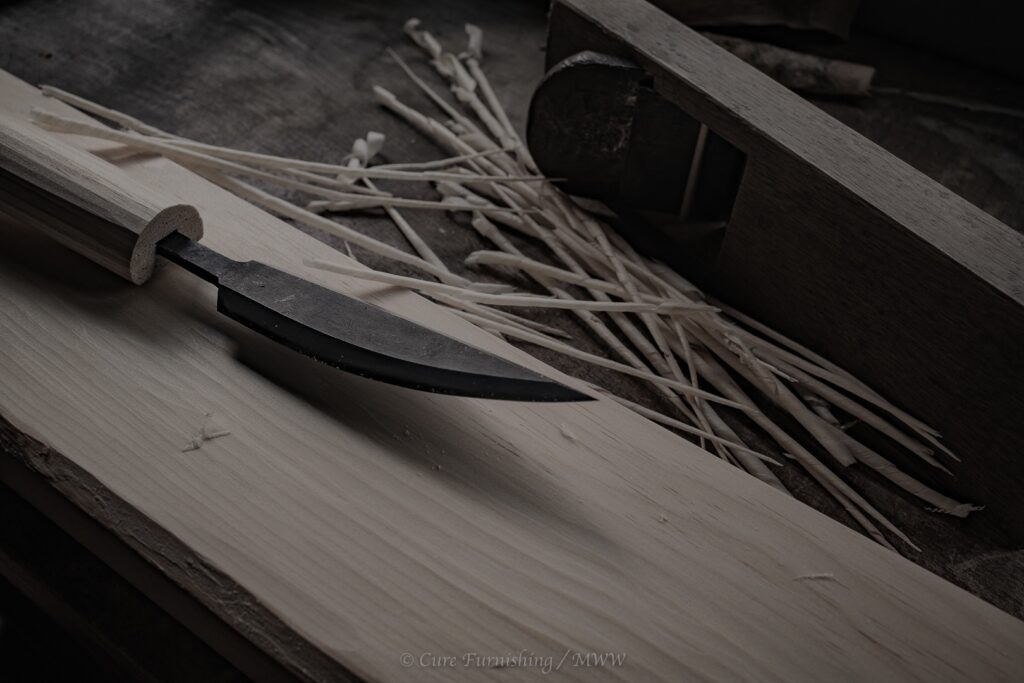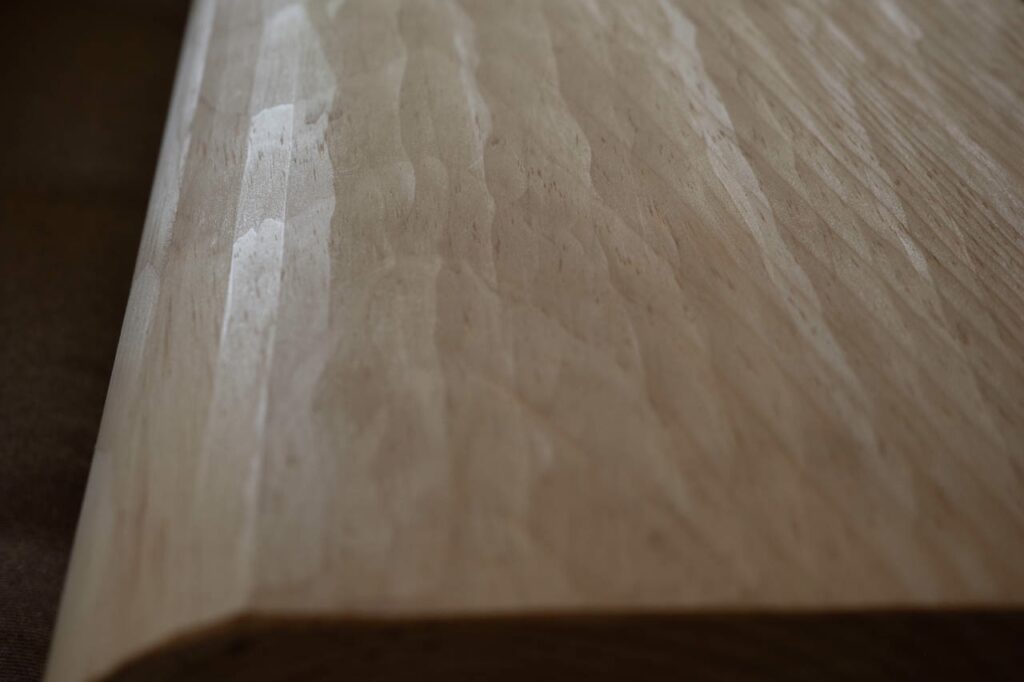
【2024最新】日本古来の道具・槍かんなで仕上げる
About Yari-ganna finishing
木工家・樹木効能研究家(27年) 牧野泰之 Yoshi-yuki Makino
槍がんなとは何か
槍がんなは古代から中世まで使用されていた日本最古の大工道具の一つ。槍のような刃物で木材の表面を削り、木材を仕上げていた。私たちがよく知る木の台に刃物が付けられたものは台鉋と呼ばれ、中国大陸から鎌倉時代に伝来したもの。
台かんなとの違い
湾曲した刃をもつ槍がんなは削れる幅も狭く、わずかな凹凸が残る。一方、台かんなは木目を気にせず、刃物の幅で板を正確に平面にすることができた。そのため16世紀頃まで槍がんなは使用されたとされるが、その後は徐々に使われなくなり、文献や絵画に残るのみとなっていき、その製法や技法は長く失われていた。
槍がんなで仕上げる
20世紀に薬師寺金堂を再建した昭和の大棟梁、西岡常一氏等による文献、発掘品、当時の柱の削り跡など様々な資料の調査・分析によって、20世紀の終わりに復元。その後、宮大工など古来の仕上げにこだわる人によってのみ使われている。槍がんなは木目の方向に沿って削るので、その木が持つ、より自然な風合いを表現することができ、その独特の凹凸表情は柔らかい手触りで、日本古代の名建築の雰囲気を知ることができる。

What is a Yari (spear) gunna?
The spear gunna is one of the oldest carpentry tools in Japan, used from ancient times until the Middle Ages. A spear-like blade was used to shave the surface of wood to finish it. The one we are familiar with, in which the blade is attached to a wooden stand, is called a dai-kanna, and was introduced from mainland China in the Kamakura period (1185-1333).
Difference from the dai-kanna
Yariganna with a curved blade is narrow enough to be sharpened and leaves a slight irregularity. On the other hand, the dai-kanna could plane a board precisely with the width of the blade without worrying about the grain of the wood. The spear-kanna is said to have been used until around the 16th century, after which it gradually fell out of use and was only found in documents and paintings, and its manufacturing method and techniques were long lost.
Finishing with a spear gunna
It was restored at the end of the 20th century through research and analysis of various materials such as documents, excavated items, and the remains of columns cut at that time by Tsunekazu Nishioka, a great master builder of the Showa period who rebuilt the Kondo of Yakushiji Temple in the 20th century, and others. Since then, it has been used only by palace carpenters and others who insist on the ancient finish. Yari-ganna is shaved along the direction of the grain of the wood, so it can express the more natural texture of the wood, and its unique uneven expression is soft to the touch, providing an insight into the atmosphere of the famous architecture of ancient Japan.





